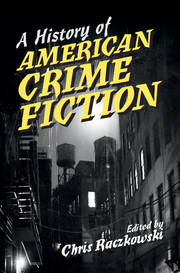Book contents
- A History of American Crime Fiction
- A History of American Crime Fiction
- Copyright page
- Contents
- Contributors
- Acknowledgments
- Introduction
- Part I Early American Era
- Chapter 1 From Sermon to Story
- Chapter 2 The Theft of Authorship
- Part II Romantic Era
- Part III Realist Era
- Part IV Modernist Era
- Part V Postmodernist Era
- Index
- References
Chapter 2 - The Theft of Authorship
Crime Narrative in Post-Revolutionary Early American Literature
from Part I - Early American Era
Published online by Cambridge University Press: 27 October 2017
- A History of American Crime Fiction
- A History of American Crime Fiction
- Copyright page
- Contents
- Contributors
- Acknowledgments
- Introduction
- Part I Early American Era
- Chapter 1 From Sermon to Story
- Chapter 2 The Theft of Authorship
- Part II Romantic Era
- Part III Realist Era
- Part IV Modernist Era
- Part V Postmodernist Era
- Index
- References
- Type
- Chapter
- Information
- A History of American Crime Fiction , pp. 27 - 40Publisher: Cambridge University PressPrint publication year: 2017

